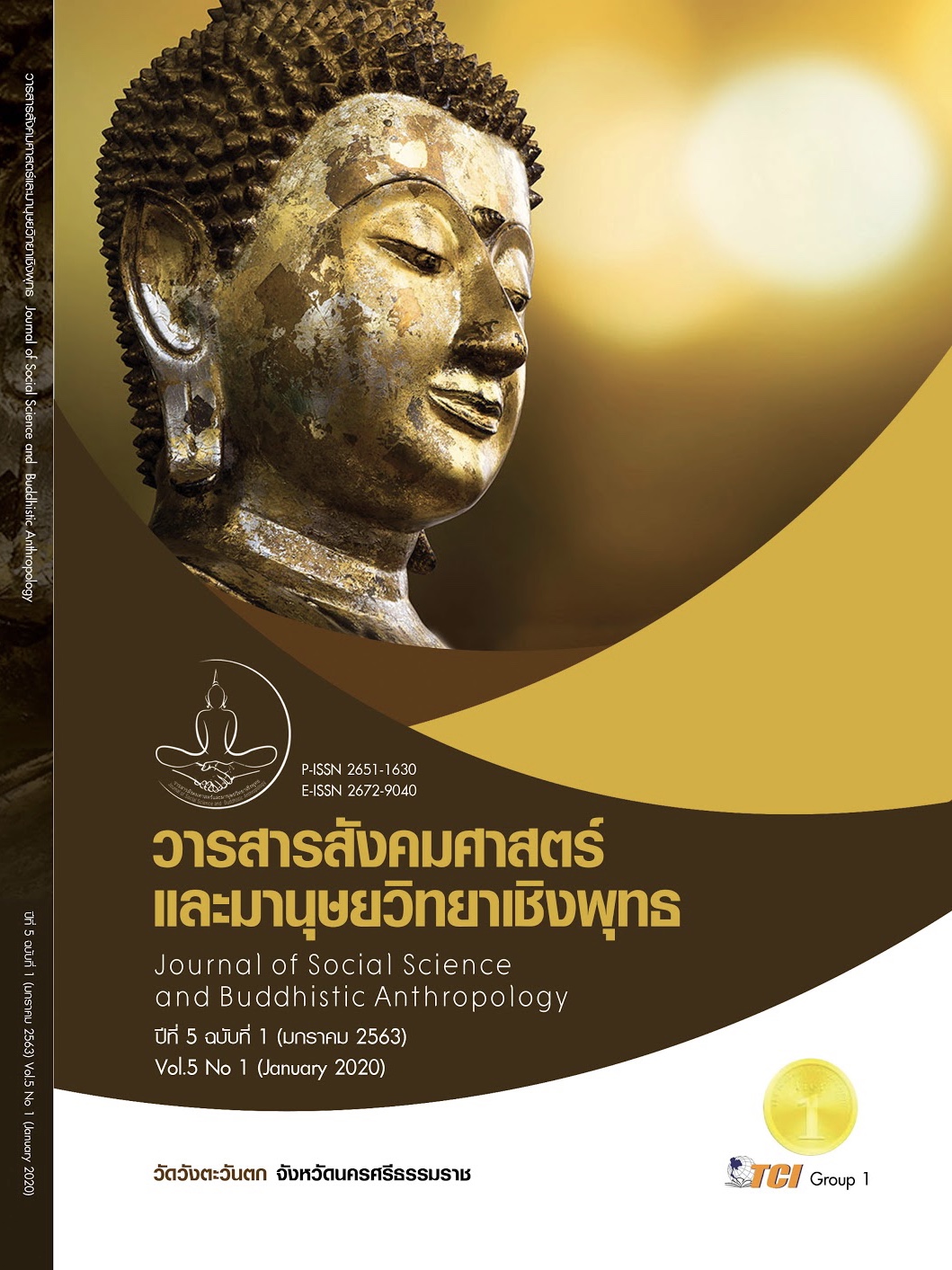BUDDHIST ECOLOGY INTEGRATED FOR ENVIRONMENTAL SOLUTION
Keywords:
Environmental Problems, Buddhist Ecosystem, IntegrationAbstract
This article is a documentary research with the objective of proposing an integrated approach to Buddhism in order to solve environmental problems according to modern science and Buddhism, which are data collection, analysis, and synthesis respectively. The results showed that: The environmental problems according to Ehrlich's concept are caused by population (P: Population), consumption behavior (A: Affluence) and technology (T: Technology) according to the equation I = PAT. Solving problems can be done by reducing population, reducing consumption, choosing environmentally friendly technology, focusing on self-sufficiency in accordance with sufficiency economy, understanding the correct nature of nature with the concept of deep ecology, Gaia theory, Chaos theory. However, the solution was not successful, both population and consumption due to capitalist economic stimulation. Buddhism has environmental issues appear in the Ckakkravatisutra, Akgannasutra, Adhammikasuttra, which shows that the quality of the population is significant when a person's lust or greed causes social problems and environmental problems ensue because lust stimulates consumption and leads to pursuit, competition and unwholesome deeds. Problem-solving should control the lust of a person with a correct understanding of the nature of the cause of each other by maintaining one's own benefit and not causing the least harm to the system or the least punishment in order to compile caution in consumption so as not to cause problems to social and environment. In integrating Buddhist ecology, the researcher proposed a new environmental cause from Ehrlich's equation, I = PAT, with two more variables being I = PRA + ct, namely R: Recognition and c: capitalism and the solution should emphasize the correct understanding of nature, namely depend on each other to lead to responsible actions towards oneself and society also, be aware that humans are one of the keystone species in the ecosystem, that is, humans are living organisms that affect the ecosystem, either increasing or decreasing biodiversity more widely than other organisms.--These are supporting conditions of the solution of the problems.
References
ประเวศ อินทองปาน. (2553). การศึกษาเปรียบเทียบนิเวศวิทยาในพุทธปรัชญากับ นิเวศวิทยาแนวลึกตามทัศนะของอาร์เน แนสส. วารสารมนุษยศาสตร์ มก, 17(2), 71-88.
พงศกร ศุภกิจไพศาล. (2556). บริการนิเวศ. เรียกใช้เมื่อ 28 มีนาคม 2561 จาก https://pigshop.wordpress.com/2013/09/27/ ecosystem-services/.
พระบาทสมเด็จพระปรมินทรมหาภูมิพลอดุลยเดช. (2517). พระบรมราโชวาท ในพิธีพระราชทานปริญญาบัตร ของมหาวิทยาลัยเกษตรศาสตร์ ณ หอประชุมมหาวิทยาลัย เกษตรศาสตร์. เรียกใช้เมื่อ 28 มีนาคม 2561 จาก http://www.rdpb.go.th/rdpb /visit/philosophy_of_sufficiency_economy.html
พระพรหมบัณฑิต (ประยูร ธมฺมจิตโต). (2557). วิธีบูรณาการพระพุทธศาสนากับศาสตร์สมัยใหม่. กรุงเทพมหานคร: มหาจุฬาลงกรณราชวิทยาลัย.
ฟริตจ๊อฟ คาปร้า. (2546). จุดเปลี่ยนแห่งศตวรรษ 3: มองความจริงด้วยทัศนะใหม่. (พิมพ์ครั้งที่ 5). กรุงเทพมหานคร: มูลนิธิโกมลคีมทอง.
มหาจุฬาลงกรณราชวิทยาลัย. (2539). พระไตรปิฎกภาษาไทย ฉบับมหาจุฬาลงกรณราชวิทยาลัย. กรุงเทพมหานคร: มหาจุฬาลงกรณราชวิทยาลัย.
วิทยากร เชียงกูล. (2558). สิ่งแวดล้อม: ระบบนิเวศสังคมที่ทุกคนควรรู้. กรุงเทพมหานคร: แสงดาว.
Chatsumarn Kabilsingh et al. (2010). Buddhism and Nature Conservation. (2nd). Bangkok: Thai Tibet Center.
Edward Lorenz. (1971). Chaos Theory. Retrieved Mar 27, 2018, from https://www. scribd.com/document/1532 03578/ Deep-Ecology-by-Arne-Naess-pdf.
Einstein A. (1960). Ideas and Opinions. (5th). U.S.A.: Crown Publishers. Inc.
Lovelock J. E. (1972). Gaia as Seen through the Atmosphere. Atmospheric Environment, 6(8), 579-580.
Naess A. (1973). Deep Ecology. Retrieved Mar 25, 2018, from https://www.scribd.com/document/1532 03578/ Deep-Ecology-by-Arne-Naess-pdf
Næss A. (1973). The shallow and the deep, long‐range ecology movement. An Interdisciplinary Journal of Philosophy, 16 (1–4), 95–100.
Parthasarathi Banerjee. (2010). “Ethics in science and technology: exploring a select perspective”. in Ethics, business and society managing responsibly. USA: response books.
Paul R. Ehrlich. (2014). Human impact: the ethics of I=PAT. Ethics in Science and Environmental Politics, 14(1), 11-18.
WHO. (2019). Public Health Environmental and Social Determinants of Health. Retrieved Jul 22, 2019, from https://www.who.int/phe/en/
WWF. (2018). Living planet index. Retrieved Mar 22, 2018, from http://www. wwf.or.th/news_ and_ information/livingplanetreport 2018/ livingplanetin dex.








